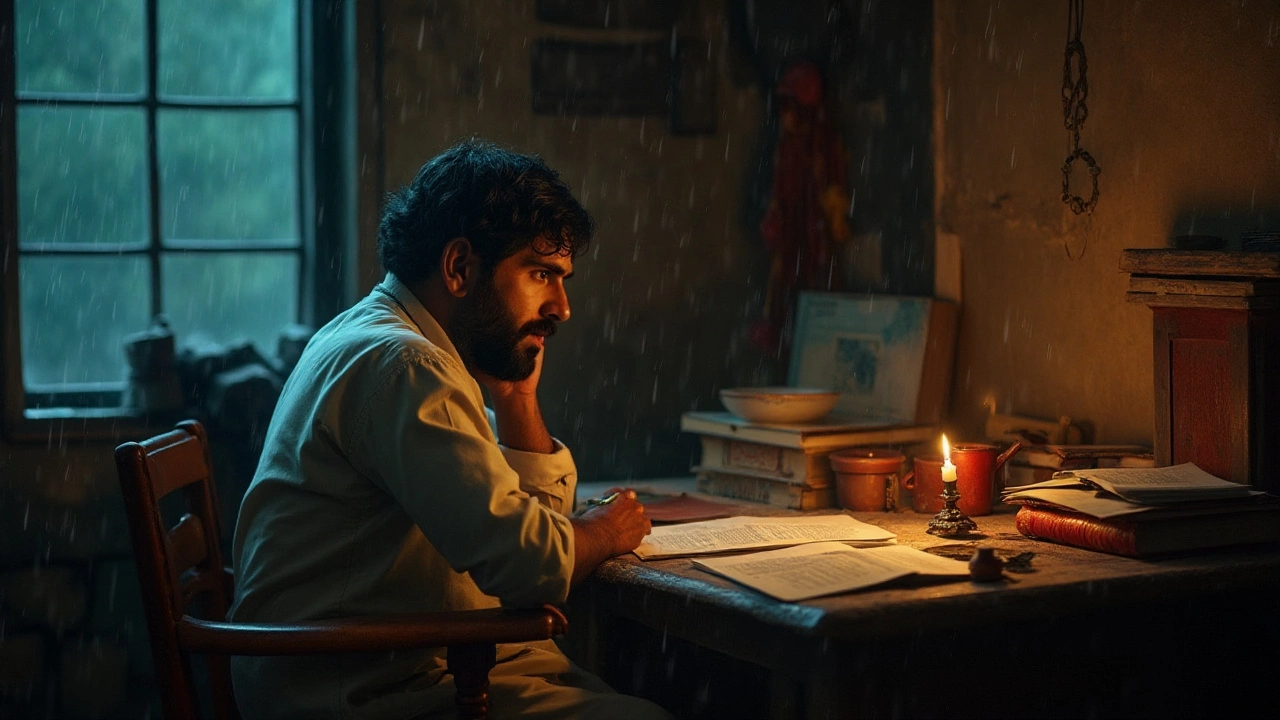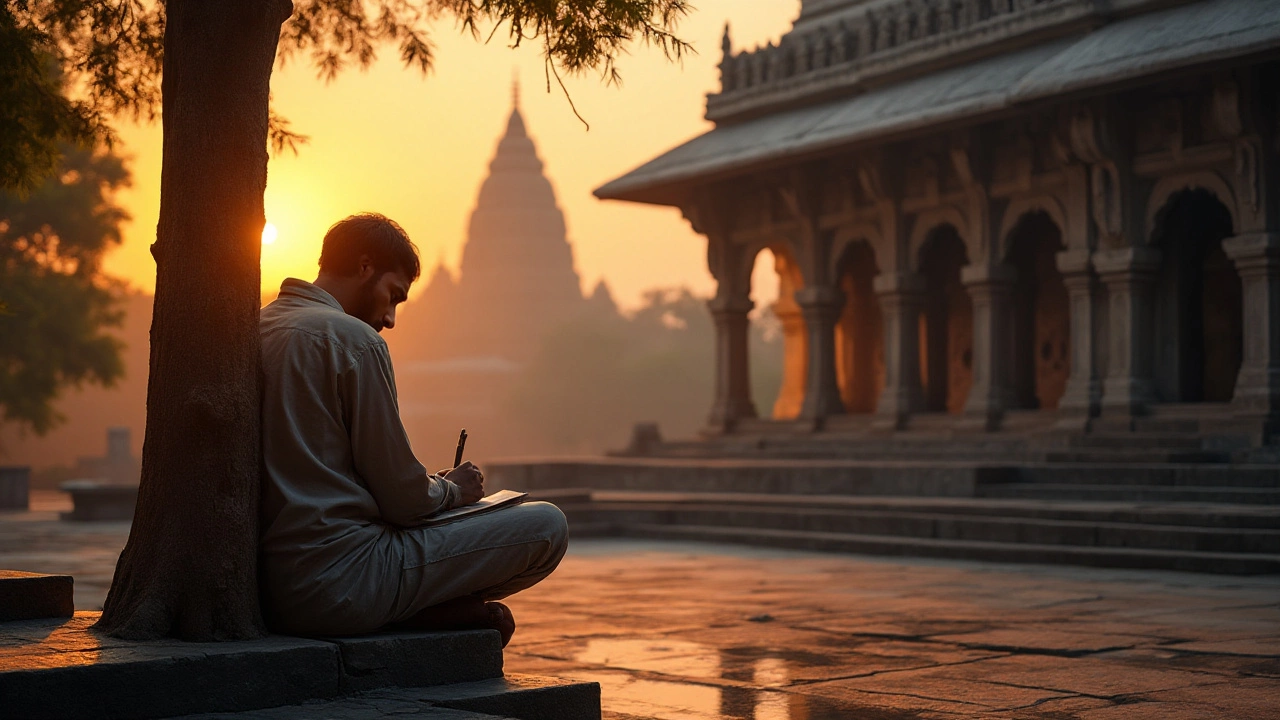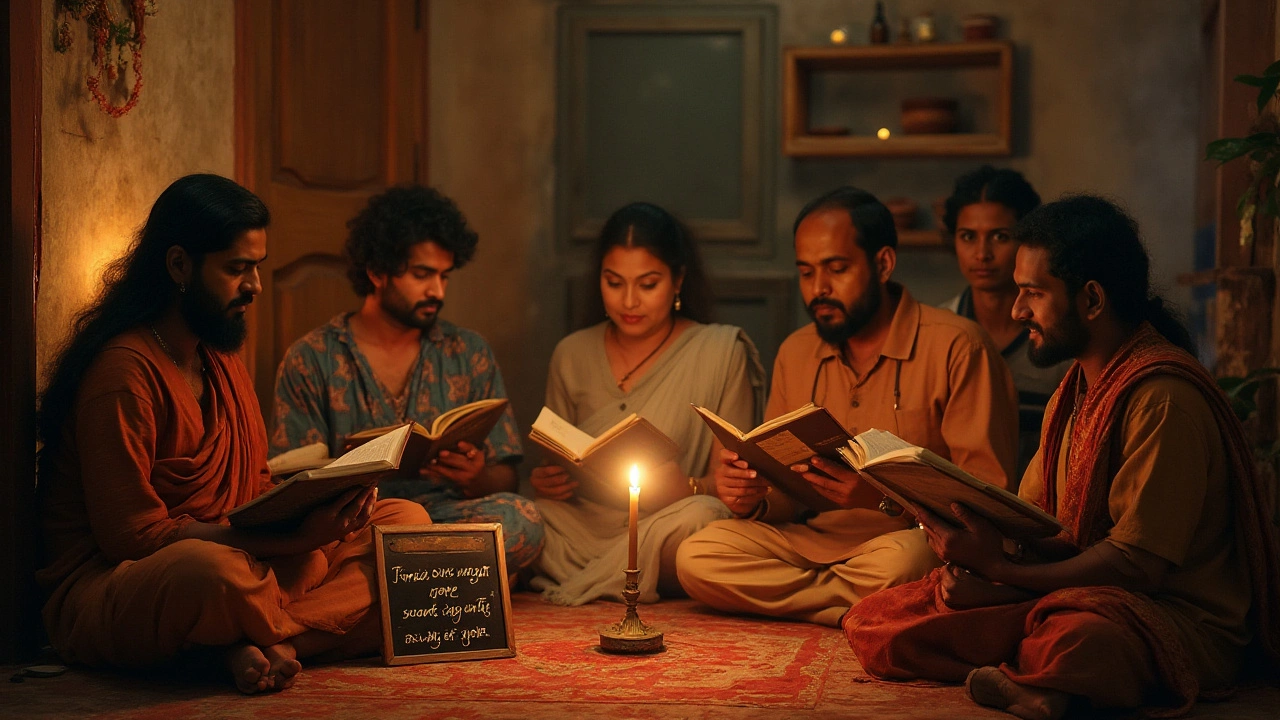Exploring India's Most Heartbreaking Poems: A Journey Through Sad Poetry

Sad poetry holds a special place in the hearts of many, offering solace and understanding in times of grief and introspection. It's a realm where emotions run deep, where words act as a balm for life's inevitable sorrows. In India, a country with a rich tapestry of cultural expressions, sad poetry plays a pivotal role in conveying the essence of human fragility and resilience.
The beauty of sad poetry lies in its ability to connect us with our own vulnerabilities and those of others, often mirroring the pain and the poignancy of our own experiences. Poets craft their verses with a delicacy and precision that can make even the most hardened of hearts pause and reflect.
This article journeys through India's poignant poetry landscape, highlighting the works and lives of those poets who have captured the essence of sadness in their writing. We will also delve into the cultural nuances that make Indian sad poetry uniquely impactful, providing readers with insights into how to approach these profound expressions of the human condition.
- The Essence of Sad Poetry
- Iconic Poets and Their Heartbreaking Works
- Cultural Impact of Sad Poetry in India
- Reading Tips for Embracing Sad Poems
The Essence of Sad Poetry
The cathartic realm of sad poetry is woven with the threads of sorrow, longing, and an acute understanding of the human experience. This powerful genre of poetry transcends mere words, touching upon the very essence of emotion that resides within our hearts. What sets sad poetry apart is its ability to lend voice to the unspoken emotions that often remain hidden, giving readers a safe space to explore and come to terms with their melancholic feelings. In the context of Indian poems, this emotional depth is further enriched by the diverse cultural and historical backdrop that influences poetic expression.
From classical to contemporary poetry, Indian poets have long delved into themes of loss, heartbreak, and introspection, often drawing upon personal experiences or collective societal memories. Mirza Ghalib, one of the most celebrated poets, encapsulated this sentiment in his ghazals, where he speaks of unrequited love and personal pain with a rawness that resonates through generations. One of Ghalib's couplets, "Ishq ne 'Ghalib' nikamma kar diya, varna hum bhi insaan the kaam ke," poignantly portrays how love rendered him 'worthless,' highlighting the transformative power of sorrow.
Sad poetry often employs deep metaphors, lyrical language, and vivid imagery to convey emotions that might otherwise be inexpressible. Poets skillfully craft their words to evoke empathy and reflection, encouraging readers to embark on a journey within themselves. This introspective nature makes sad poetry a profound tool for both personal and universal exploration of grief and healing. By opening a dialogue between the reader and the poem, it urges one to confront uncomfortable emotions, ultimately leading to a sense of understanding or peace.
A noteworthy aspect of sad poetry is its accessibility across language and socio-economic barriers. It serves as a unifying force, bringing people together through shared emotional experiences. Whether one is leafing through Rabindranath Tagore's poignant verses or finding solace in the contemplative works of Kamala Das, sad poetry's universal themes of heartache and resilience remain relatable to audiences of all ages and backgrounds. This ability to connect deeply with readers is what has allowed sad poetry to endure and flourish across generations.
Many poets would argue that the beauty of sad poetry lies in its authenticity. In a world that often demands stoicism and strength, sad poetry offers a refuge, a place where vulnerability is not only accepted but celebrated. This aspect of honesty provides readers with a sense of companionship, a gentle reminder that they are not alone in their struggles. For countless individuals, turning to heartbreaking poems during times of personal crisis has provided comfort and clarity, offering a mirror through which they can see their own pain reflected and validated.
“Poetry is the spontaneous overflow of powerful feelings: it takes its origin from emotion recollected in tranquility.” – William Wordsworth
In the kaleidoscope of emotions that constitute human life, sad poetry remains a testament to art’s power to heal and connect. It is through these distilled words of wisdom and empathy that readers find tranquility amidst turmoil. With each verse, it invites us to embrace our fragility as intrinsic to our humanity, celebrating the capacity of the written word to mend wounds unseen. Sad poetry doesn't just chronicle the human experience— it actively enriches it, transforming sorrow into a profound catalyst for understanding, acceptance, and love.
Iconic Poets and Their Heartbreaking Works
In the realm of Indian poems, few forms resonate more profoundly than the evocative and emotional verses that encapsulate the sad poetry genre. These poetic pieces are not just words on paper but profound expressions of heartfelt emotions, often capturing the essence of grief, loss, and longing. Amongst the vast array of talented poets, several stand out for their unparalleled ability to evoke such deep emotions through their writing. Let's delve deeper into the works and lives of some of these iconic figures who have shaped the landscape of heartbreaking poems in India.
Faiz Ahmed Faiz, though not Indian by nationality, holds a revered place in the hearts of many Indian poetry aficionados. His ability to blend emotions with intricate political commentary made his works timeless. In "Mujh Se Pehli Si Mohabbat," Faiz captures the agony of unfulfilled love, blending personal pain with a broader societal lament. This combination creates a poignant experience for readers, who are often left reflecting on both personal and communal sorrows. Faiz's poetry evokes an emotional crescendo as he writes about the impossibility of returning to a former state of love. His words instill a paradoxical sense of hope and despair, entwining them in a beautiful yet haunting dance.
Another poet who holds a significant place in the tapestry of Indian sad poetry is the revered Mirza Ghalib. Ghalib's verses often explored the depths of love and loss intertwined with existential musings. His ghazals, such as "Hazaron Khwahishein Aisi," leave a lingering impact on the reader, presenting a blend of melancholy and philosophical contemplation. Ghalib's ability to touch on themes of time, fate, and human longing make his works some of the most frequently recited pieces in Indian households. A testament to his enduring legacy is how frequently his lines are quoted in everyday contexts, illustrating his profound influence on culture and language.
In the modern era, poets like Gulzar have continued the tradition of crafting emotional verses that speak to the heart. Known for his lyrical prowess in both poetry and film lyrics, Gulzar's works often delve into the nuances of human relationships, capturing their complexities with subtle elegance. His poem "Yaadon Ki Almari" is a brilliant example of how memories can form a canvas for both happiness and sorrow. Gulzar's style is understated yet powerful, capable of awakening deep-seated emotions through his careful choice of words that are deceptively simple yet deeply profound.
Rounding out this exploration of iconic Indian poets is Amrita Pritam, whose works often reflect the turmoil and resilience of the human spirit. Her poem "Ajj Aakhaan Waris Shah Nu" is a heartfelt appeal to the legendary Punjabi poet to witness and react to the carnage of the partition. Pritam's words reflect a shared cultural grief and act as a rallying cry for empathy and compassion. Her unwavering exploration of themes such as love, loss, and societal transformation make her poetry both timeless and immensely relevant, allowing readers to tap into a shared reservoir of collective human emotions.
As one immerses themselves in the words of these poets, it becomes apparent how deeply interconnected the human experience is with the creation of sad poetry. These poets not only reflect personal sorrow but translate the collective cries of humanity into poetic articulation. Their works endure not because they dwell in sadness, but because they provide a mirror to our most intimate struggles, inviting us to find solace and understanding in the shared journey of life.

Cultural Impact of Sad Poetry in India
The rich tradition of sad poetry in India is deeply entwined with the country's diverse cultural fabric. As one delves into the emotional verses of India, it becomes clear that these literary pieces serve not just as expressions of personal grief, but also as mirrors to the socio-cultural milieu of different eras. Indian sad poetry often reflects the historical and spiritual strains that run through this ancient land. From the trials and triumphs of kings and commoners to the spiritual quests that transcend the material world, every aspect of life finds its echo in the realm of verse. The haunting lines of poets such as Mirza Ghalib and Rabindranath Tagore have provided solace and understanding during periods of turmoil, both personal and national.
Sad poetry in India also plays a crucial role in highlighting the resilience of the human spirit. Many poems encapsulate the struggle against oppressive norms and the fight for freedom, whether it be in personal relationships or against colonial rulers. This dynamic interplay of sadness and strength is what gives Indian sad poetry its enduring appeal. For instance, the ghazals of Urdu poets often captured the pain of unrequited love and separation, serving as metaphors for larger existential battles. At the same time, they offered a sense of hope, a glimpse of beauty amidst suffering. As such, sad poetry in India is not just an artistic endeavor but an intrinsic part of the social fabric, shaping and being shaped by the society it emerges from.
"In the expression of our deepest sorrows, Indian poetry finds its true voice not in despair, but in the strength it brings to rise anew." — A Reflection on Poetry.Sad poetry in India has a unique power to transcend linguistic and regional barriers, thanks to the universal nature of human emotions. Across the countless languages spoken in India, the themes of loss, longing, and resilience appear again and again, forging connections among people from varied backgrounds. This shared humanity is particularly evident during cultural festivals and gatherings, where poetic renditions become collective experiences of catharsis and healing. Such moments underscore the integral role of sad poetry not just as a literary form, but as a vital cultural prism through which generations view and interpret their world. In this manner, the cultural impact of sad poetry continues to resonate, weaving its way through the tapestry of India's living traditions.

Reading Tips for Embracing Sad Poems
Sad poetry can be an intense emotional journey, much like traversing through the valleys of our deepest thoughts and feelings. However, to truly appreciate and connect with the sad poetry from India, one must approach it with an open heart and mind. Begin by setting the right environment—a quiet space where you can reflect and immerse yourself in the poet’s words without distractions. Many readers find that certain environments enhance the experience, whether it's the gentle ambiance of a dimly lit room or the soothing presence of nature. Understanding the cultural context is crucial, as Indian poems often carry themes deeply intertwined with its vast history and societal dynamics.
When approaching a poem, read slowly, allowing every word and sentiment to resonate within you. Taking time to savor the language helps in internalizing the pain, longing, and reflections embedded in the verses. Some readers even find it helpful to read aloud, which can add a vocal texture to the emotional depth. This practice highlights the rhythmic beauty and emotions behind each line, providing a more profound experience. As you read, it's beneficial to pause and ponder over metaphors and imagery that the poets so eloquently use, often drawing from nature or mythological references, which are hallmark features of the Indian literary tradition.
It's also important to approach each poem without preconceptions. Allow the poet to lead you through an emotional landscape that might be unfamiliar. Embrace empathy, putting yourselves in the poet’s shoes and seeing the world from their perspective. This shift in viewpoint can open up new understandings of sadness and suffering, both personal and universal. Occasionally, journaling your thoughts and emotions that arise while reading can provide insight into your own responses and connections with the text. It fosters a personal dialogue with the poem, enhancing the impact and meaning it holds for you uniquely.
For those seeking a structured approach, here’s a simple yet effective method to delve into sad poetry:
- Read through the poem once for a general impression, focusing on initial emotional responses.
- Identify key themes and symbols that the poet uses repeatedly throughout the work.
- Reflect on how these elements connect to broader human experiences.
- Consider reading analyses or critiques from literary experts to gain diverse perspectives.
As Rabindranath Tagore once said, "Let your life lightly dance on the edges of Time like dew on the tip of a leaf." This captures the essence of embracing poetry—recognizing fragility while finding beauty in every moment.
With these tips, approaching sad poems becomes an enriching experience. By diving into the words of India’s poets, you gain more than just literature; you connect with every shade of human emotion, ultimately allowing art to become a mirror to your own soul.